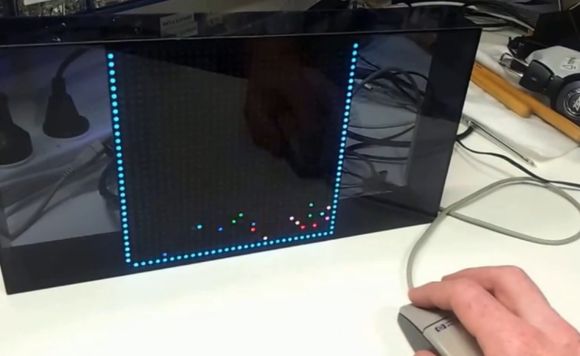
[Brad] just acquired a 32×32 RGB LED matrix and he jumped right into the deep end with his first project. To try out his skills on the device he used an Arduino to drive a slew of pixels with bouncing-ball physics.
The demo starts off with a hail storm of multi-colored falling pixels. In the center of the storm is the cursor, which he controls with a PS2 mouse. That happens to be a ball mouse which makes sense as we don’t remember having seen any optical mice as of late that weren’t USB. The PS2 protocol is easy to read using a microcontroller; more about that in [Brad’s] project write up.
By holding down the left mouse button he can draw persistent pixels on the screen. The falling balls then interact by bouncing off of the obstacles. The image above shows a frame on three sides of the screen which has trapped the pixels near the bottom. He can also erase pixels, which has the effect of draining the trapped balls like a hole in a bucket of water. Neat!
Bouncing ball physics are fun to experiment with. Here’s one being driven by an analog computer.











